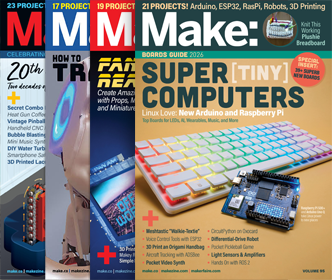

Today you’ll see a really quick way to construct giant polyhedra using off-the-shelf parts and simple tools. We’ll use a snub disphenoid as the example polyhedron, but this method will work for any polyhedron whose edges and vertices form a rigid graph in space. (For convex polyhedra, this amounts to all of the faces being triangles. So you can also make regular tetrahedra, octahedra, and icosahedra, as well as various elevated polyhedra and even other shapes, like deltahedra.)

Above are all the tools and supplies you’ll need: quarter-inch dowels (two for each edge of the polyhedron you’re building), chain-link fence privacy slats (available at home supply stores; make sure the kind you get consists of a flattened tube with two interior channels), releasable zip ties, measuring tape, sheet metal snips, and a leather punch.
Start by measuring and cutting each privacy slat (with the sheet metal snips) to match the length of the dowels you purchased, leaving an extra inch at each end for the connections. For example, I bought 48″ dowels, so I cut the slats to 50 inches. The snub disphenoid example we’re making has 18 edges, so on the right I’ve counted out 20 cut privacy slats and 40 dowels — a couple of extra in case anything goes wrong.
Now it’s time to punch a hole in the center of each end of each privacy slat for the connections at the vertices. You want the hole to be roughly 3/8 of an inch in from the end of each slat. You will probably need the largest setting on your leather punch to pass the zipties.
Next, slide a dowel into each channel of each slat (that’s two per slat). When they’re all prepared, it is time to start connecting the edges to form the polyhedron. For the snub disphenoid, you can follow along step by step with the pictures below.
Alternatively (or in addition) you can take 18 of the prepared edge rods and label each of them with one of the pairs of letters in the following list. (Note for each pair, you put one letter at one end of a rod and the other letter at the other end of the same rod.) The edges should be labeled: AB, AC, AD, AE, BC, BE, BF, CD, CF, CG, DE, DG, DH, EF, EH, FG, FH, GH. Then you “just” connect all of the rod ends labeled “A” together with a zip tie, all the ends labeled “B” with another zip tie, etc. Jockeying everything into position can be tricky, so here are step by step instructions.
Create junctions by looping zip ties through several of the holes you punched at the ends of the rods. You want all of the rods to end up perpendicular to the loop of the zip tie. Using releasable zip ties makes things much easier, because there may be mistakes along the way, and you can temporarily connect some of the rods that go together, and add the rest later.
To begin the snub disphenoid, make two sets of five rods connected at a single vertex, as shown above. You’ll want to tag these two junctions with some bright color to make them easy to find later in the process. (If you have labeled the ends of your rods by the scheme above, connect all of the ends labeled “D” for one set and “F” for the other. Also note that you need to ensure that the other ends of the “D” set are labeled A,C,G,H,E as you go around the zip tie, and for the other ends of the “F” set, the labels should be B,E,H,G,C.)
Then connect the free ends of one rod from each set (the two “G”s if you have labels), with two new rods (the two other ends marked “G”), alternating the new ones with the ones from the sets (the sets themselves are out of frame in the picture to the left, but the rods leading to the right and left connect to them).
Take the adjacent free end from each set (“H” labels), and connect them to the free end of one of the two new rods you added in the last step (also labeled “H”), and include one more new rod at the new junction (there will be one more “H” label). You’ll get something that looks like the picture.
Do almost the same thing again: take the next free end from each set (“E” labels), and connect them to the free (“E”) end of the one new rod you added in the last step, and this time include two more new rods (you’ll find two remaining with “E” labels).
There’s only one junction that has a single unconnected rod coming from it (the “G” junction). Take the free end of that rod (labeled “C”), and connect it to one more rod from each of the two original sets (labeled “C”), and add two new rods at the junction (two of the remaining three rods will have ends labeled “C”).
Take the last rod from one of the original sets (labeled “B”) and one of the two new rods from each of the last two steps (also labeled “B”), and connect them, adding the (“B” end of the) 18th and final rod at the new junction. That will give you something that looks like this:
Finally, connect all of the remaining free ends (labeled “A”). Congratulations! You have a roughly 7-foot tall snub disphenoid.
You will find that by disconnecting just two vertices (be sure to mark the ends at each junction you disconnect for easy reassembly) you can fold the whole polyhedron flat for easy transport, and…
then you can install your creation at the math department nearest you. Enjoy!
ADVERTISEMENT




















